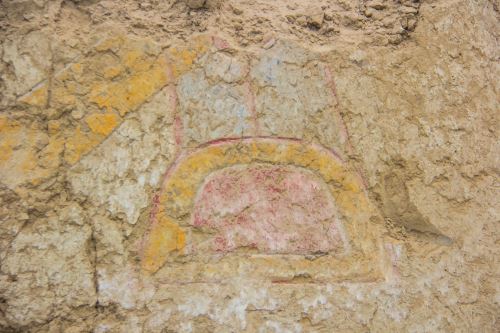11:01 | Viru (La Libertad region), Mar. 22.
Located in the middle of avocado and sugar cane crops —in the heart of Viru Province's valley in La Libertad region— there is a huaca (a burial site) whose southern facade features a wall painting that is more than 3,200 years old and belongs to Peru's ancient Cupisnique Culture.
Unfortunately, this discovery did not come to light as a result of a planned research activity, but because of the destruction of the site by a group of individuals seeking to expand their agricultural fields.
Traces of heavy machinery used for such purpose —to the detriment of the heritage— are still present in the area.

On November 11, 2020, archaeologist Regulo Franco —known for finding the funeral bundle of the
Lady of Cao— states that he was alerted to the appearance of this iconography by a person close to him.
According to Franco, he went immediately to the area after he was told about this evidence.
"When I reached the place, I was so surprised to see such an impressive facade with geometric figures. The types of adobe found there bore no relationship with the Moche occupation, but with Cupisnique's," he told Andina news agency.
"After taking a close look at the evidence, I have come to the conclusion that this monument belongs to the formative or initial stage, that is to say, it dates back around 3,200 years," he said.
The archaeologist believes that 60% of the huaca or burial mound has been destroyed and that only a small building —of around 15 meters in diameter and 5 meters high— remains.
(END) LPZ/MAO/RMB
Publicado: 22/3/2021